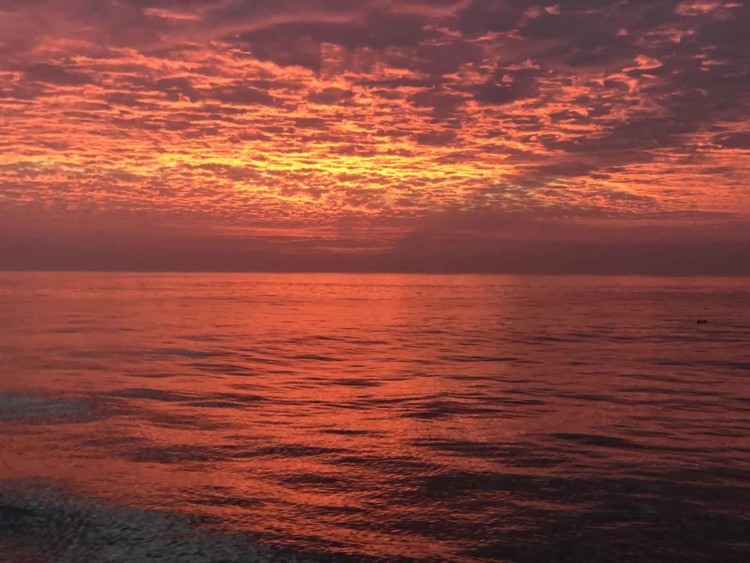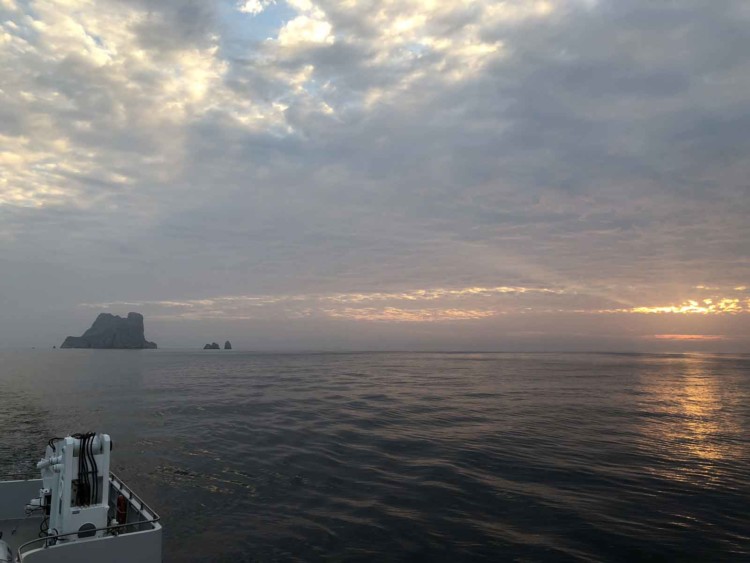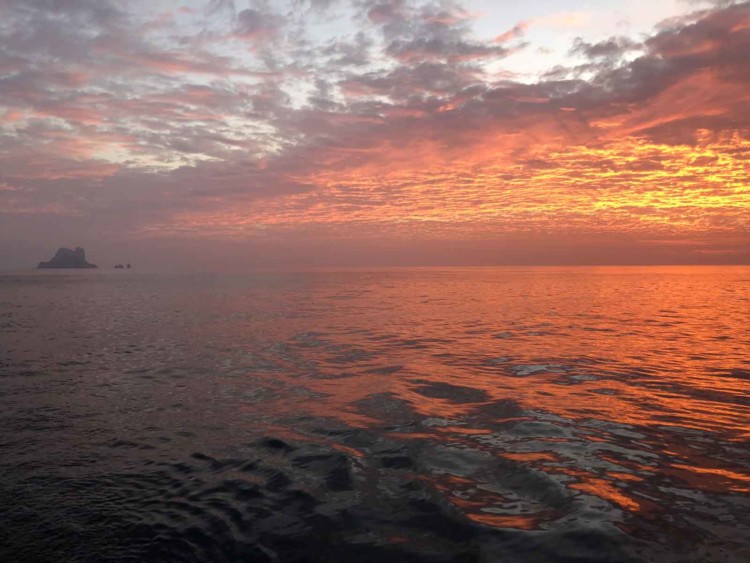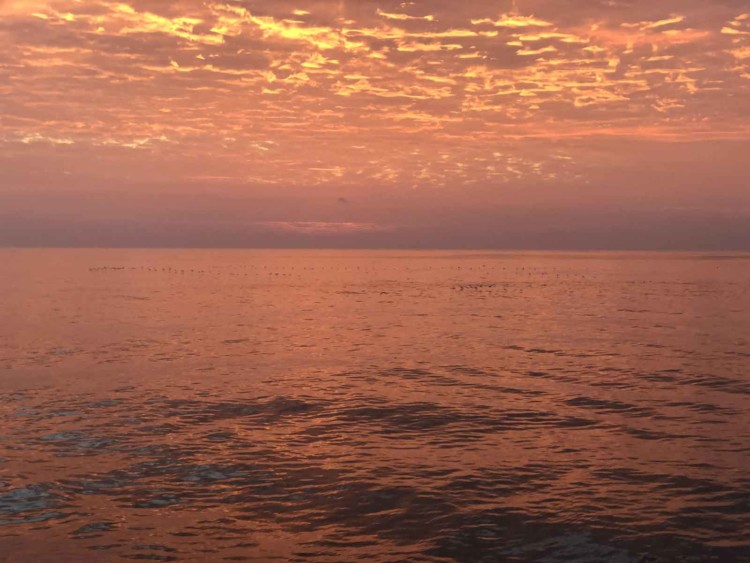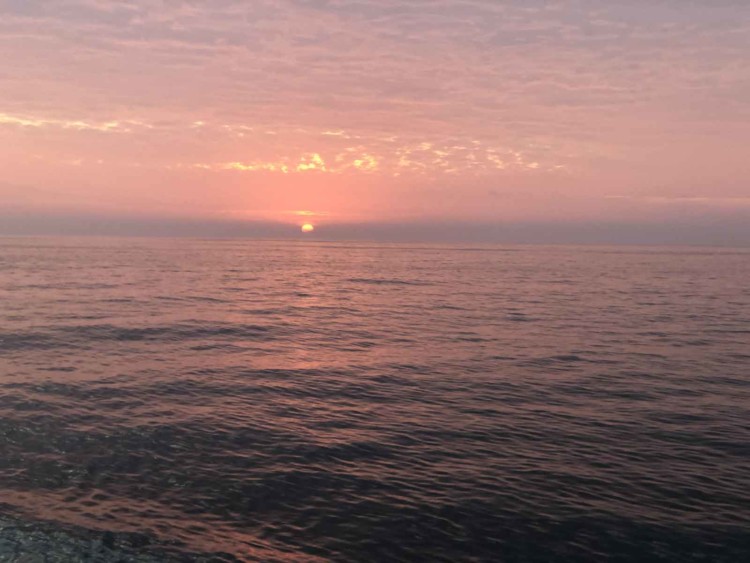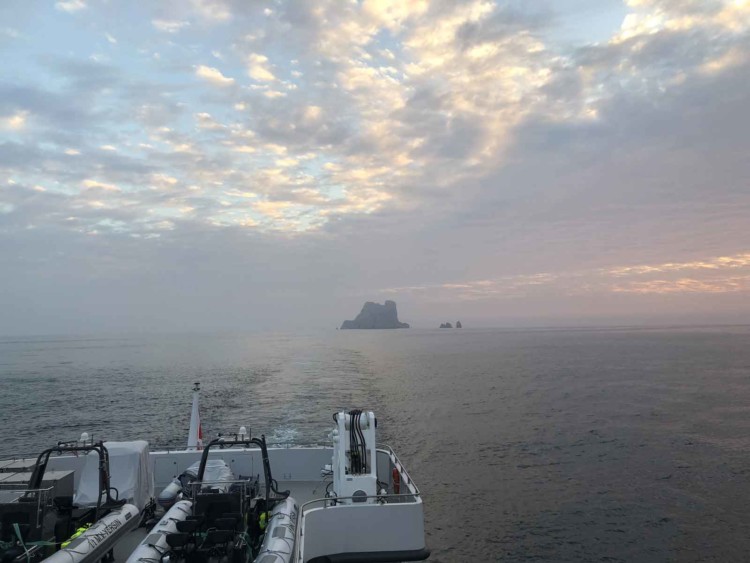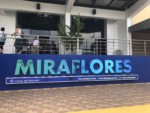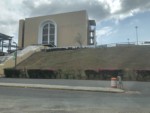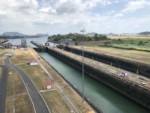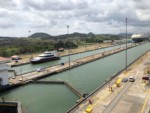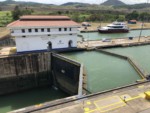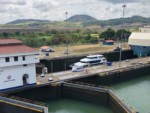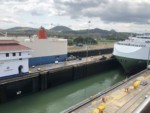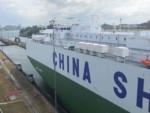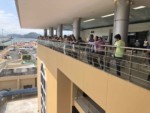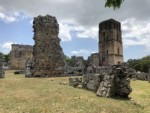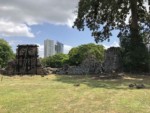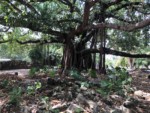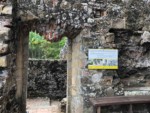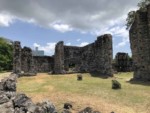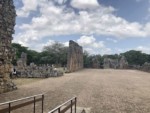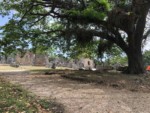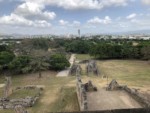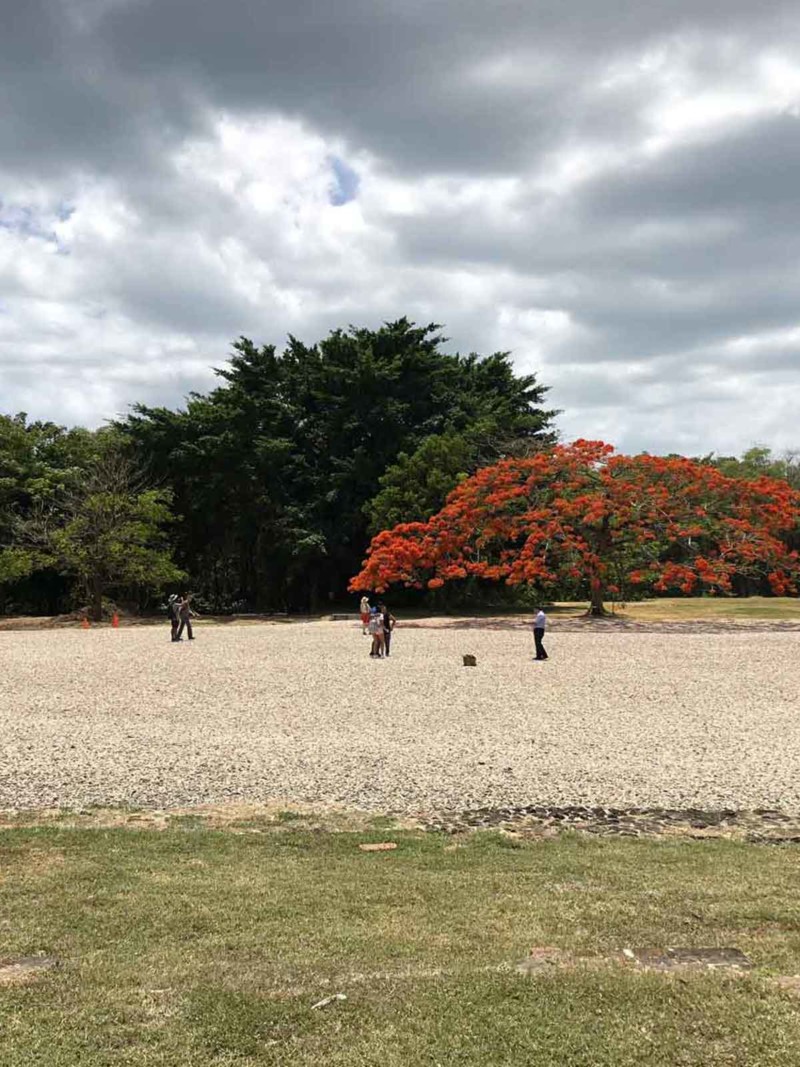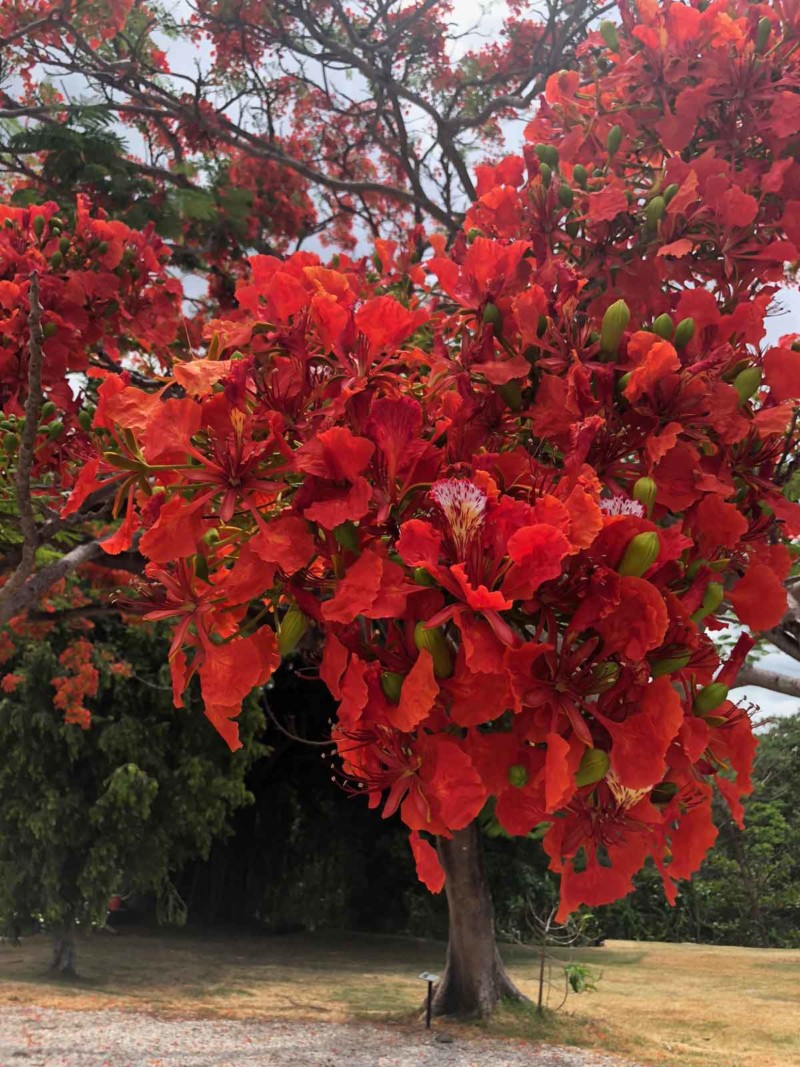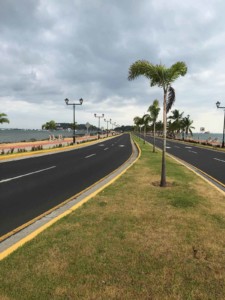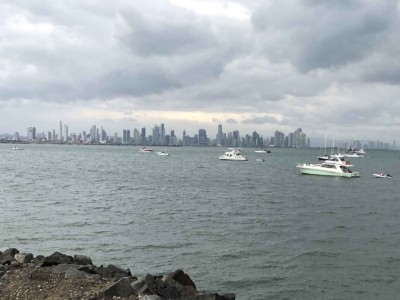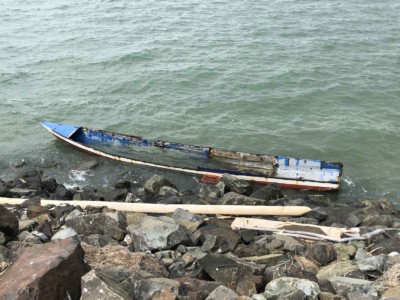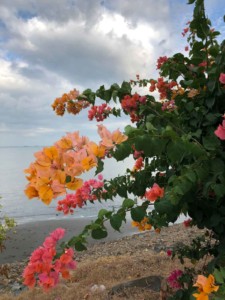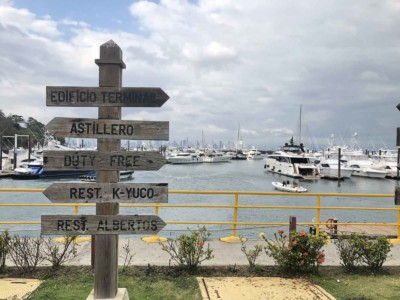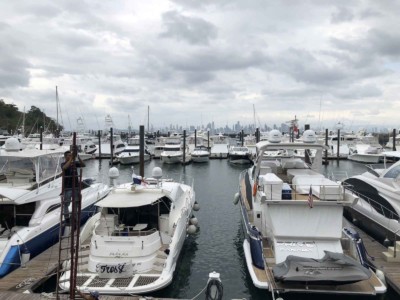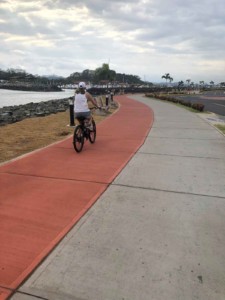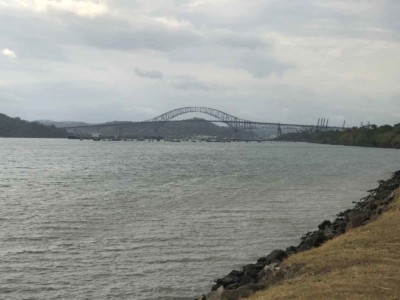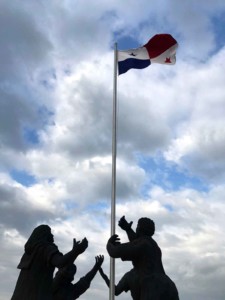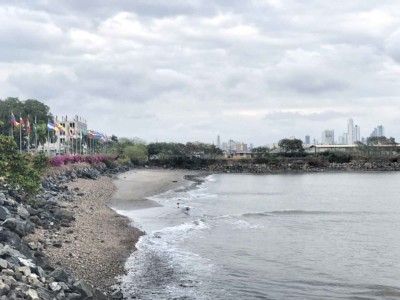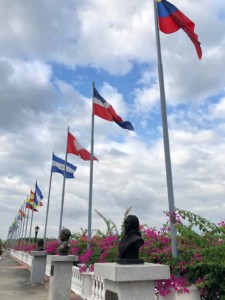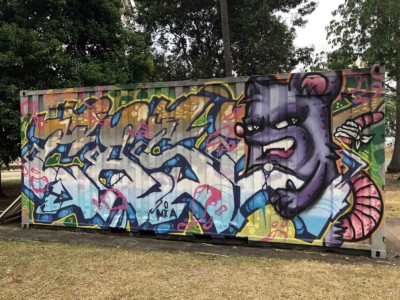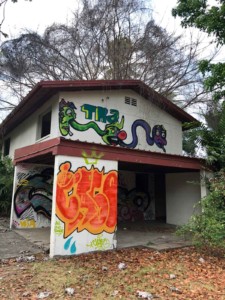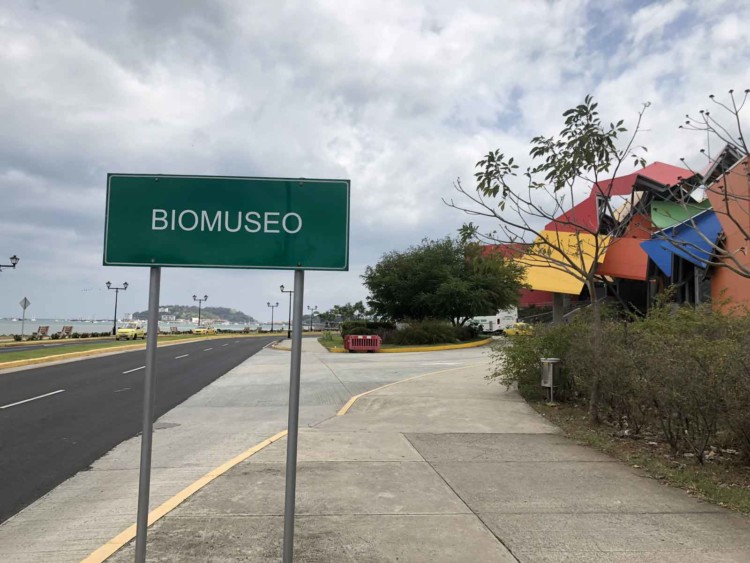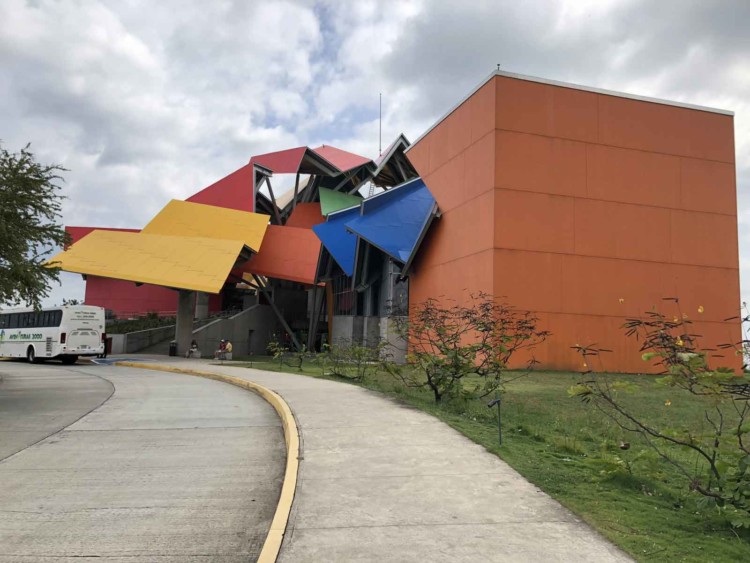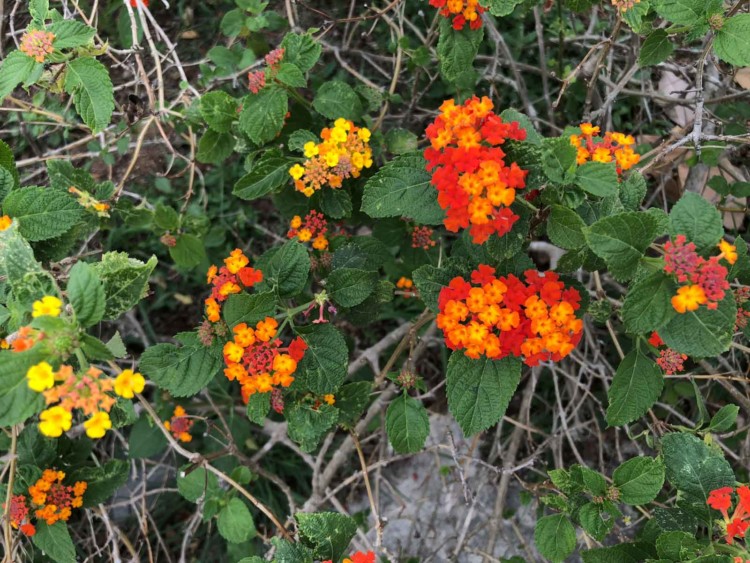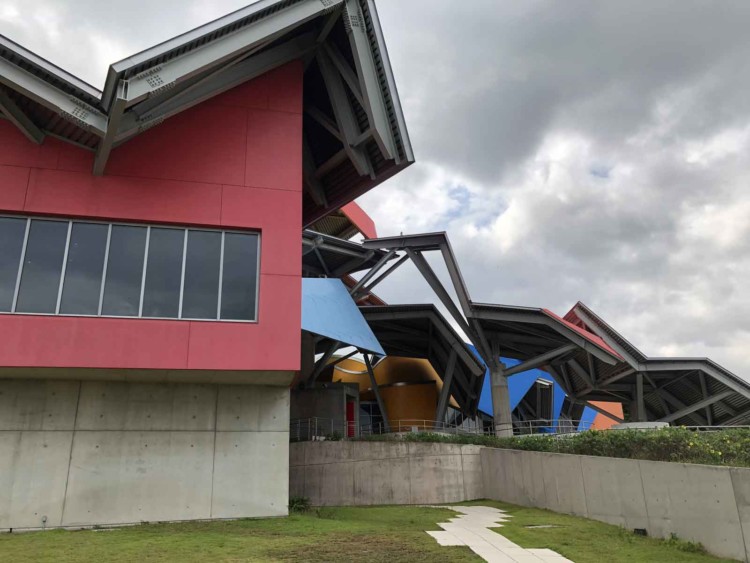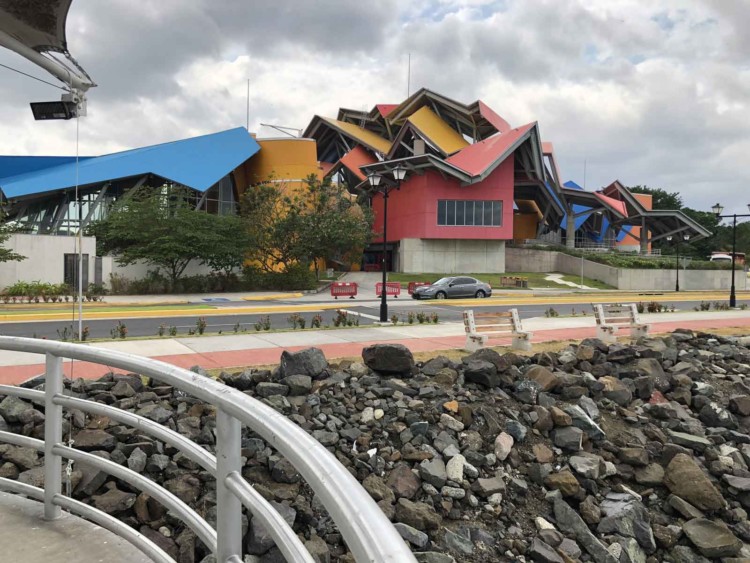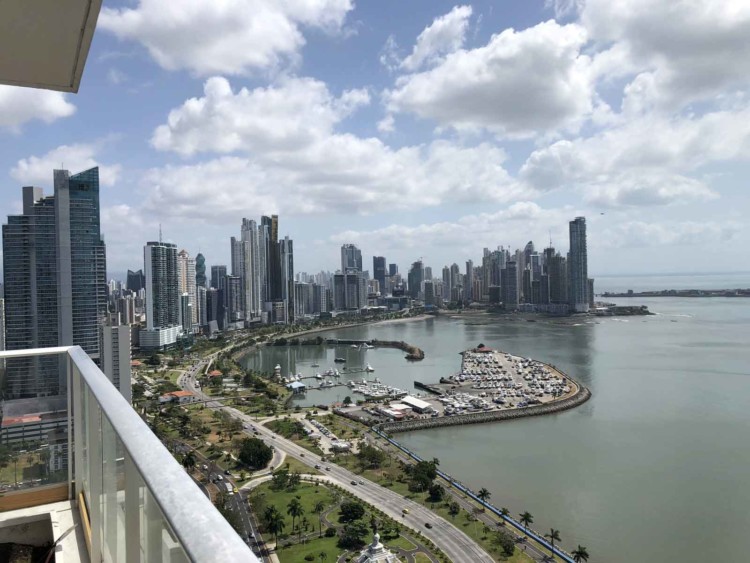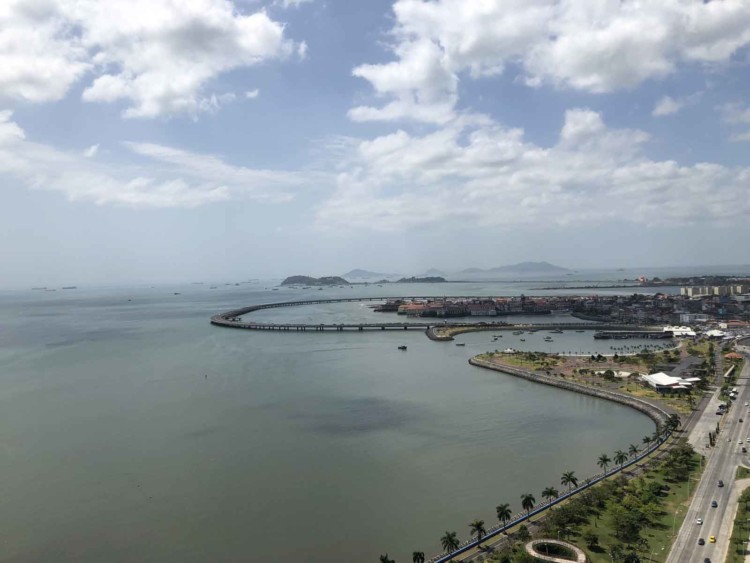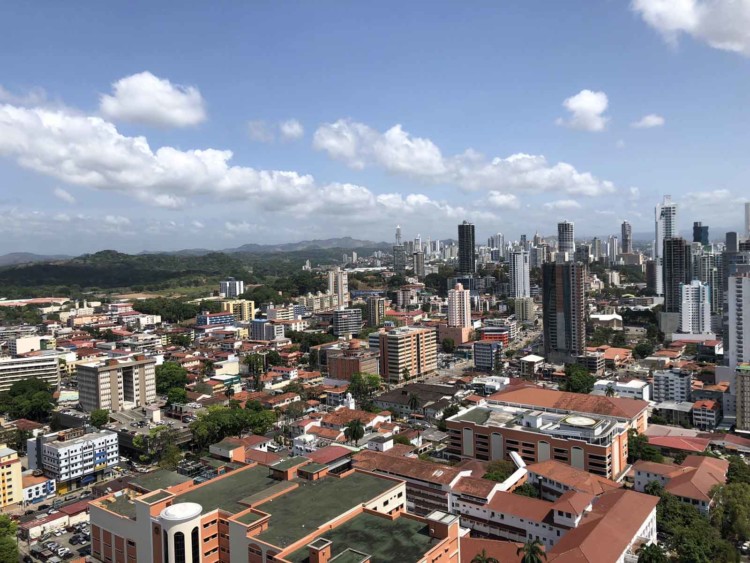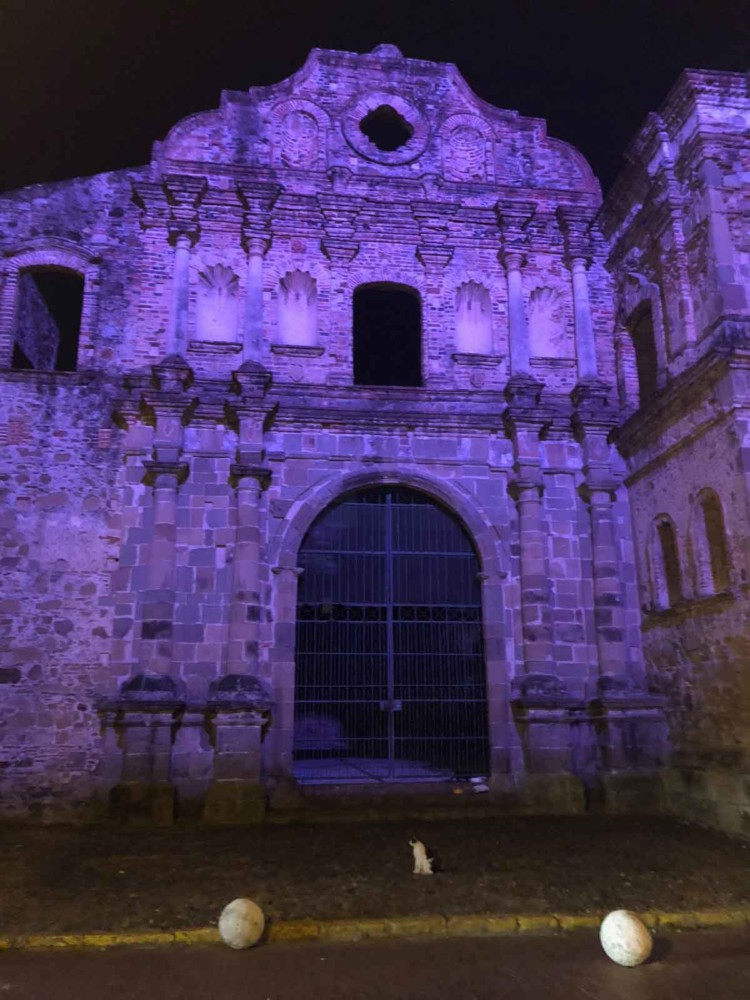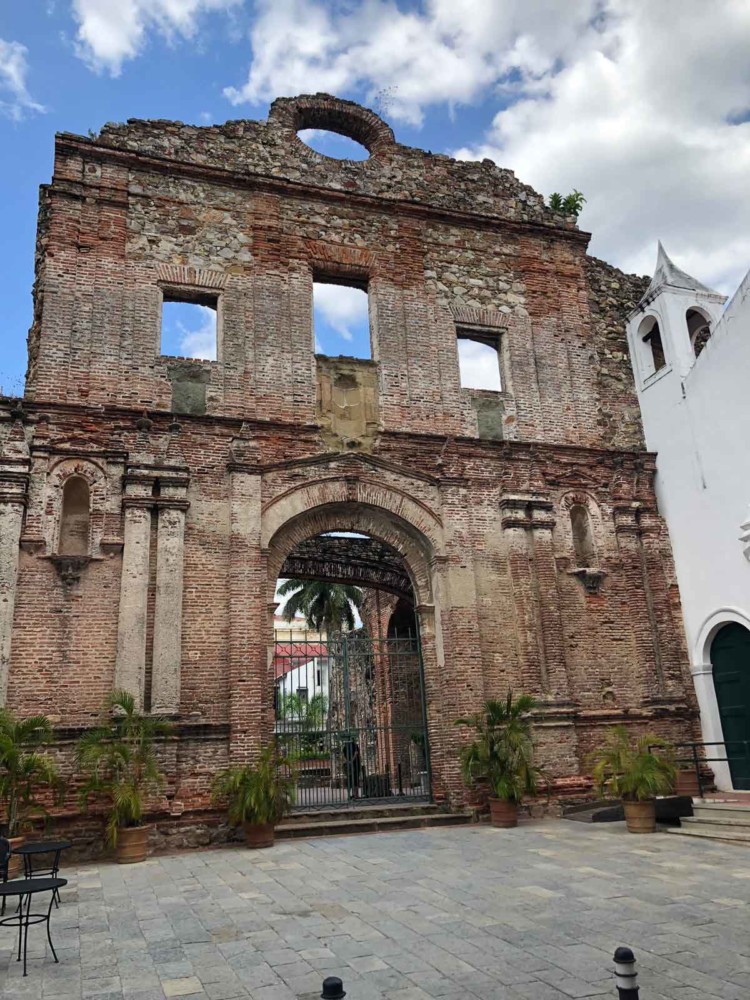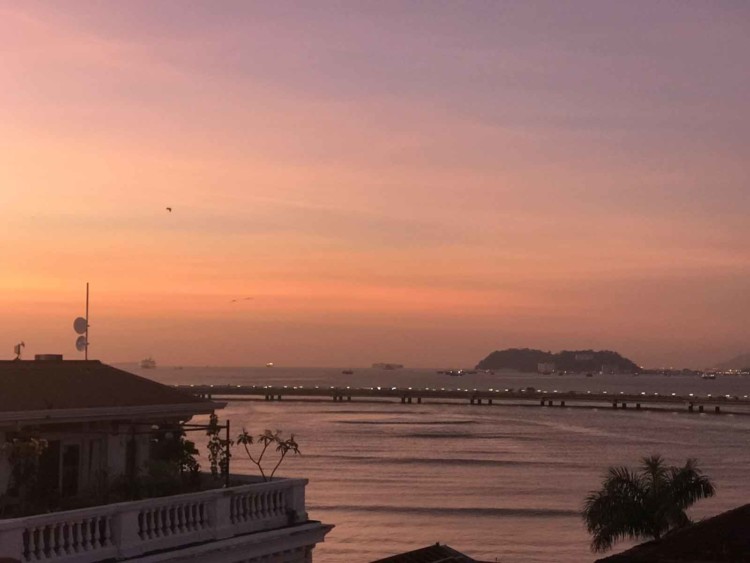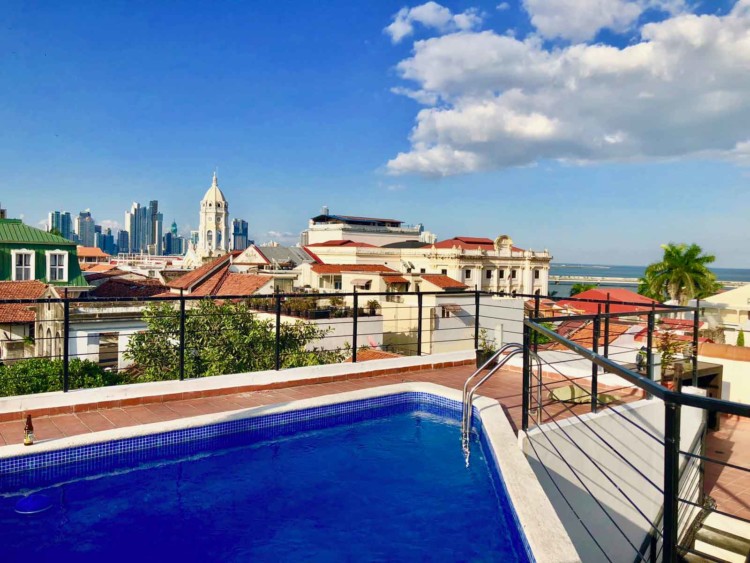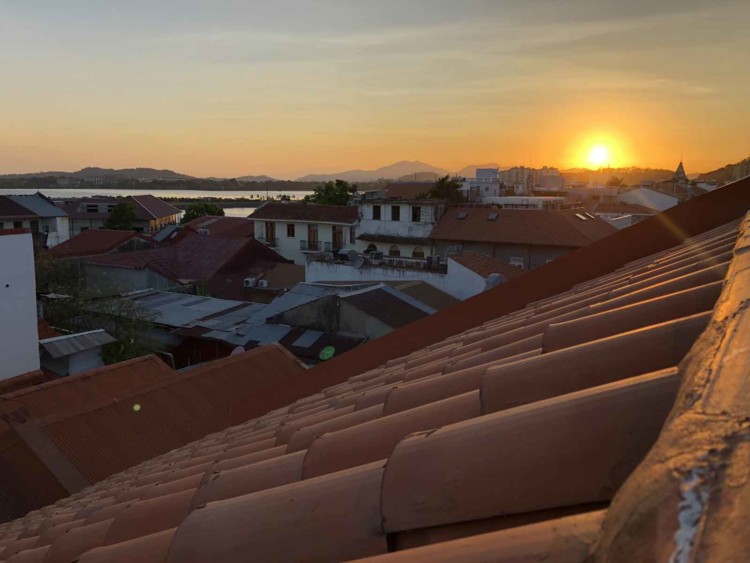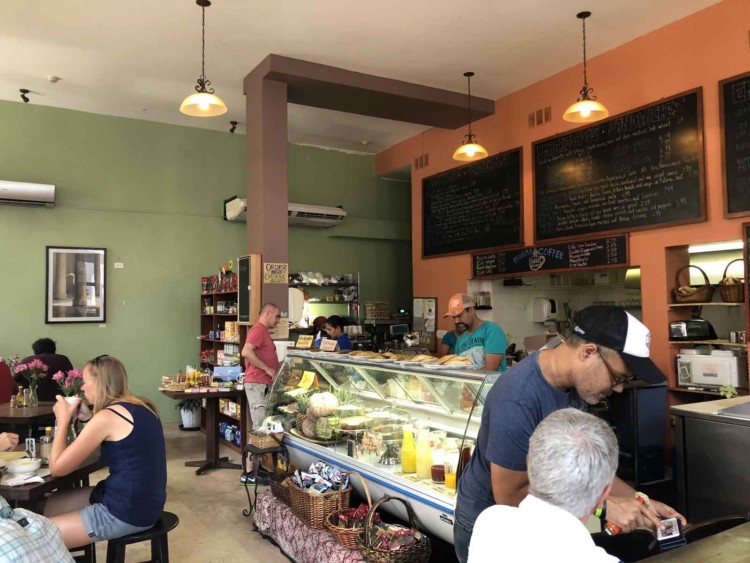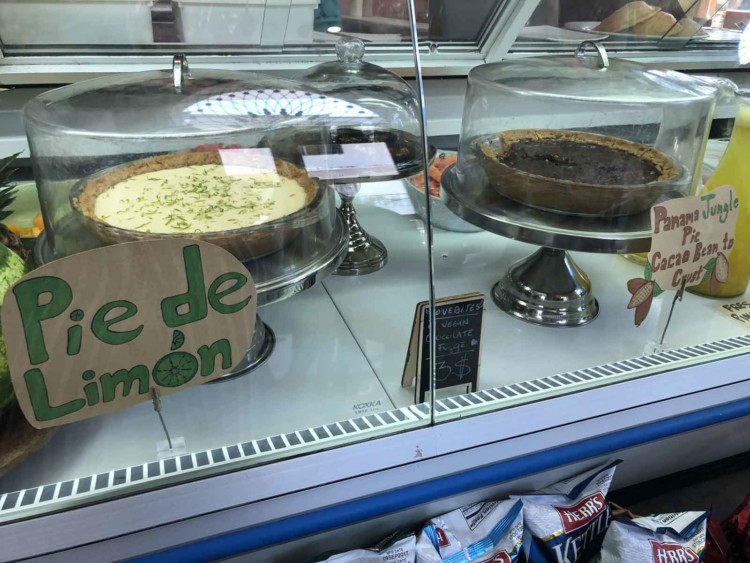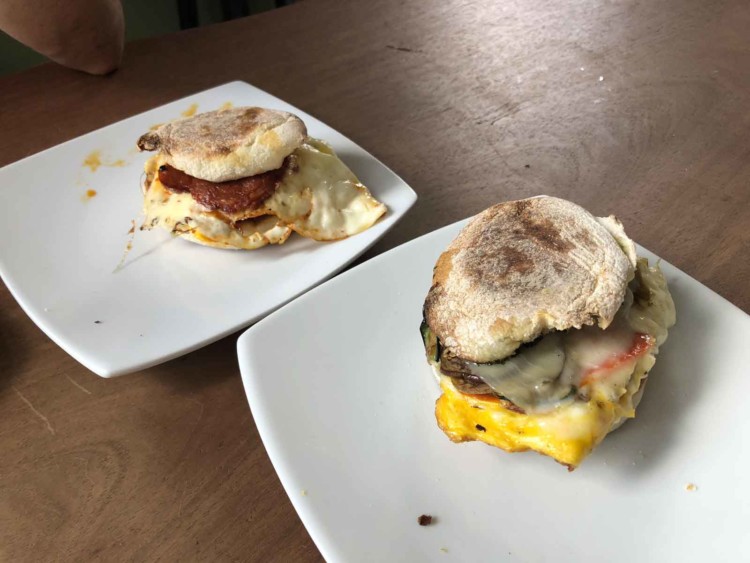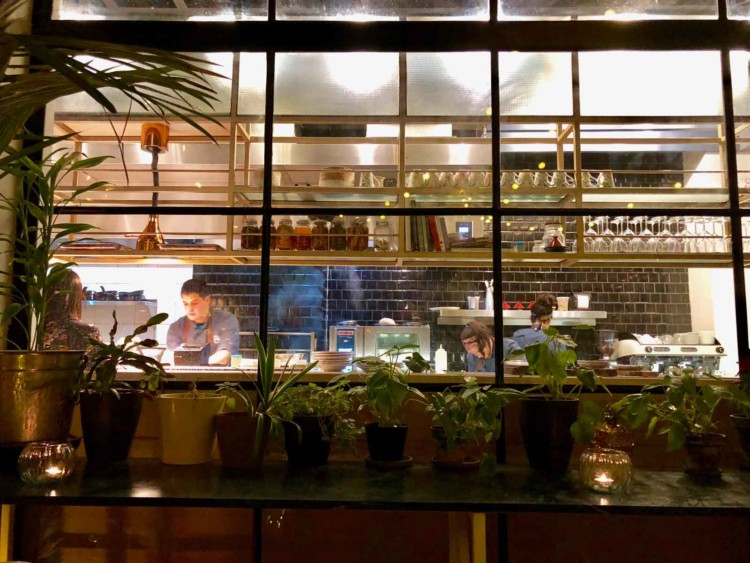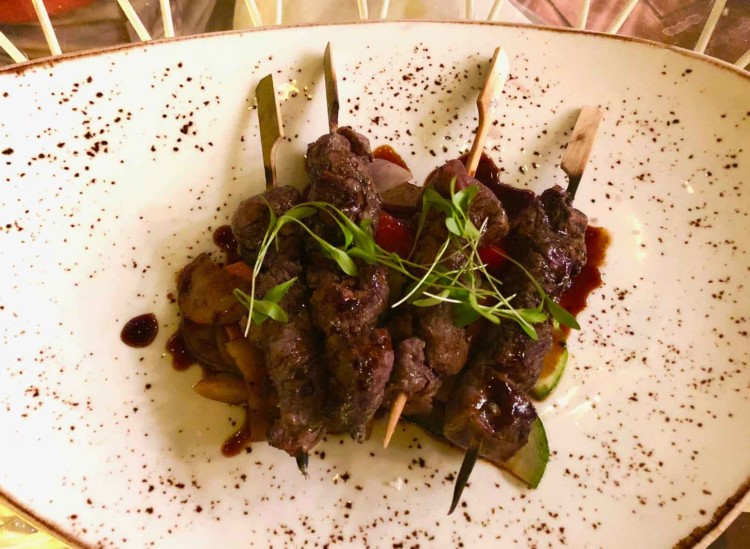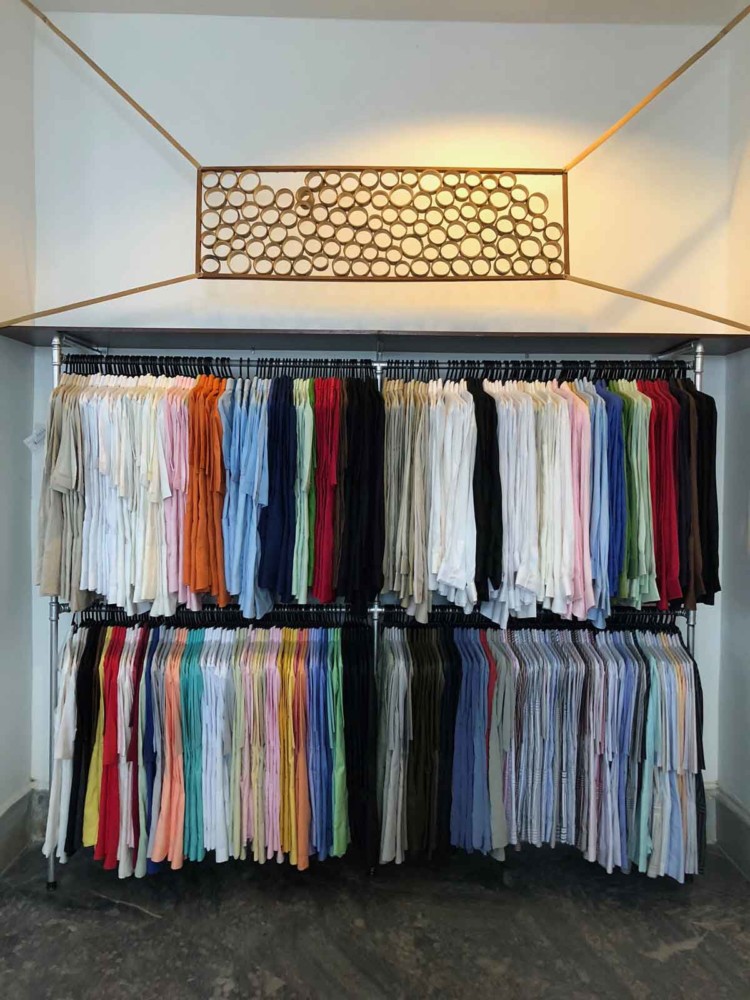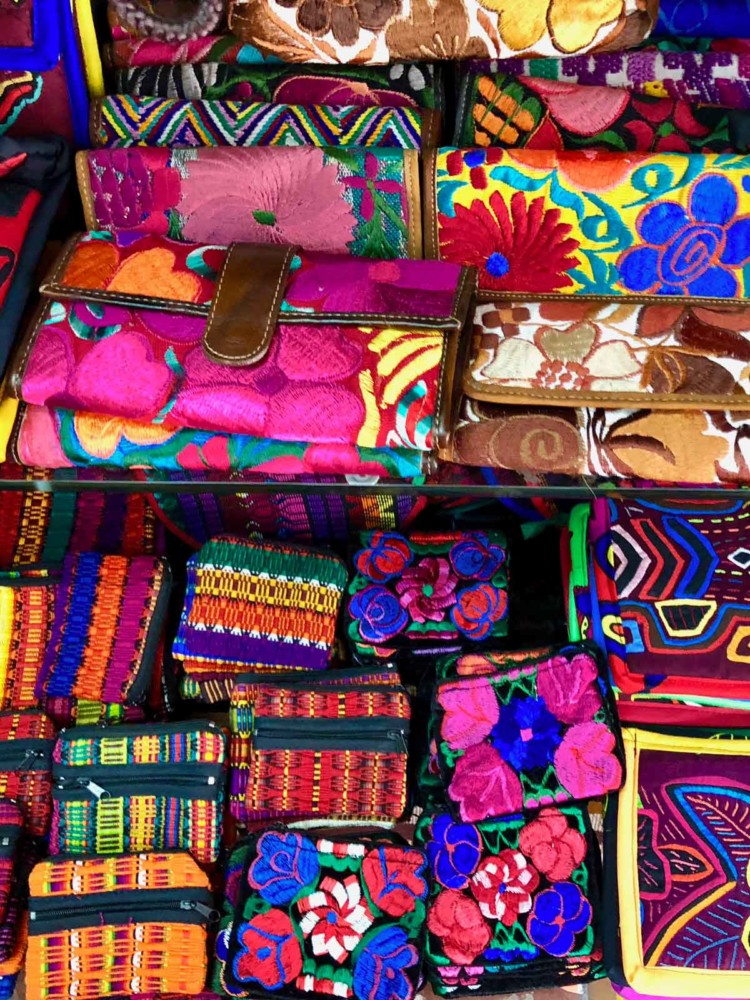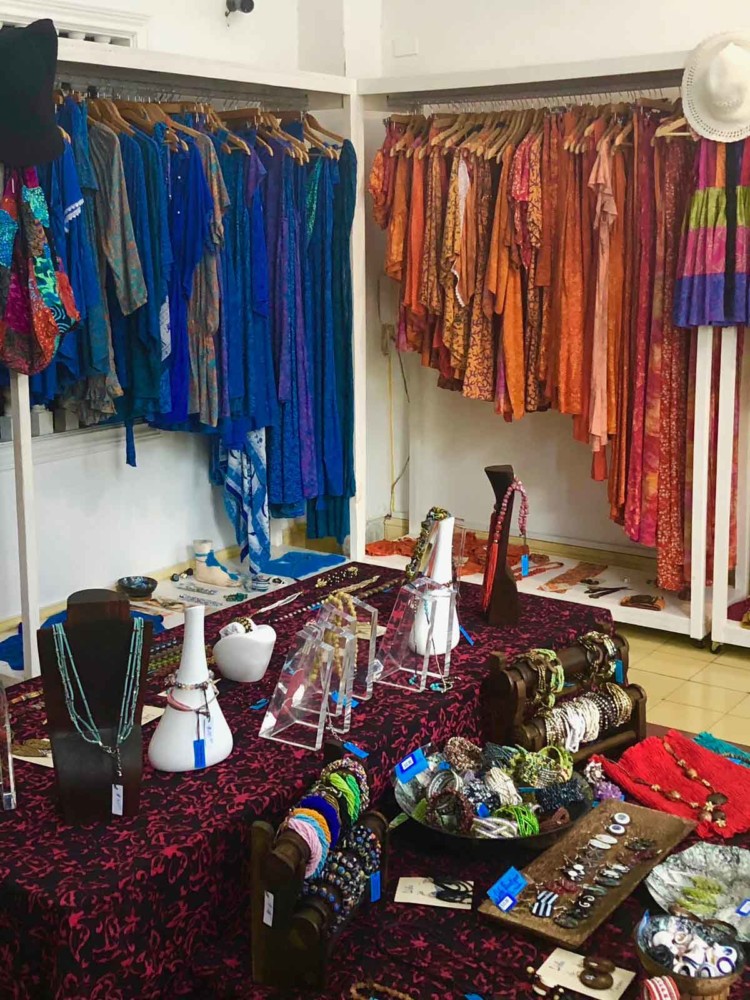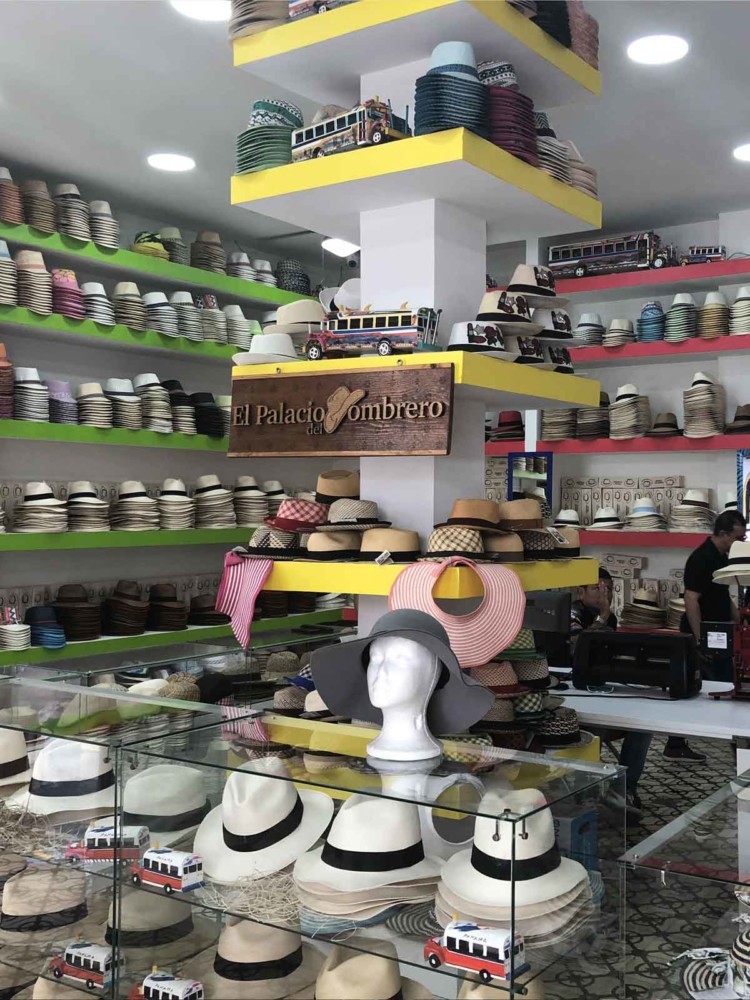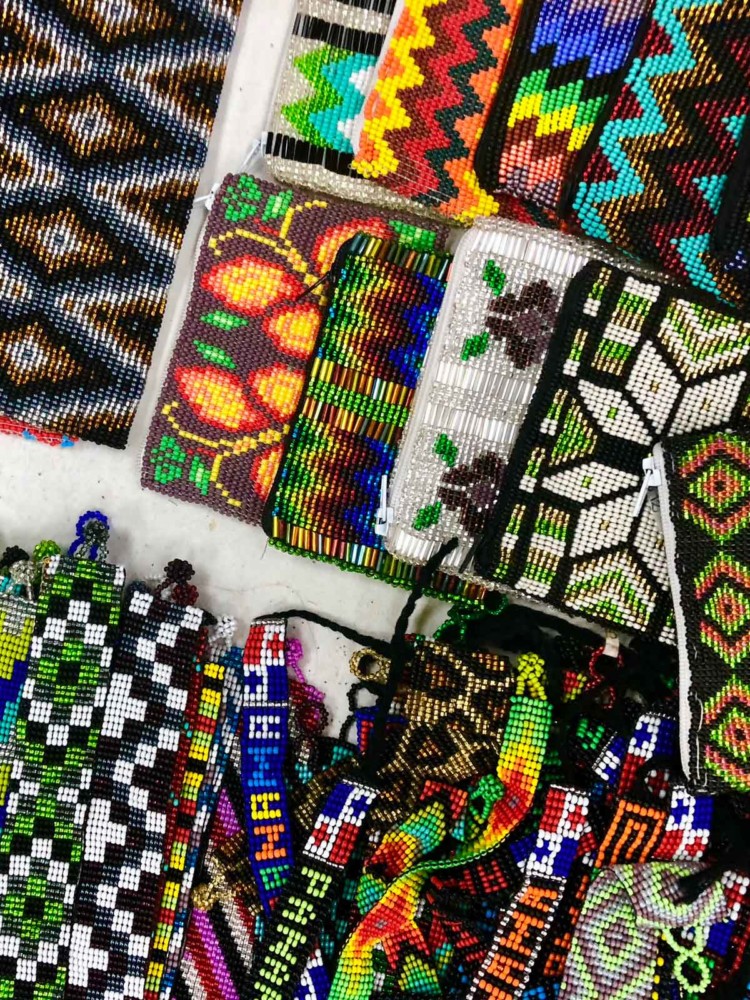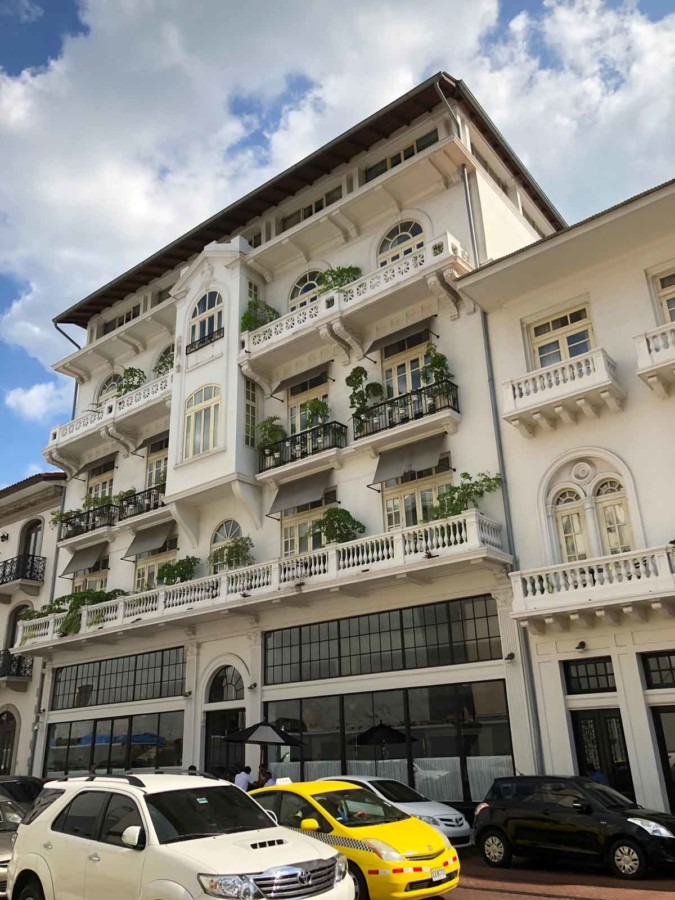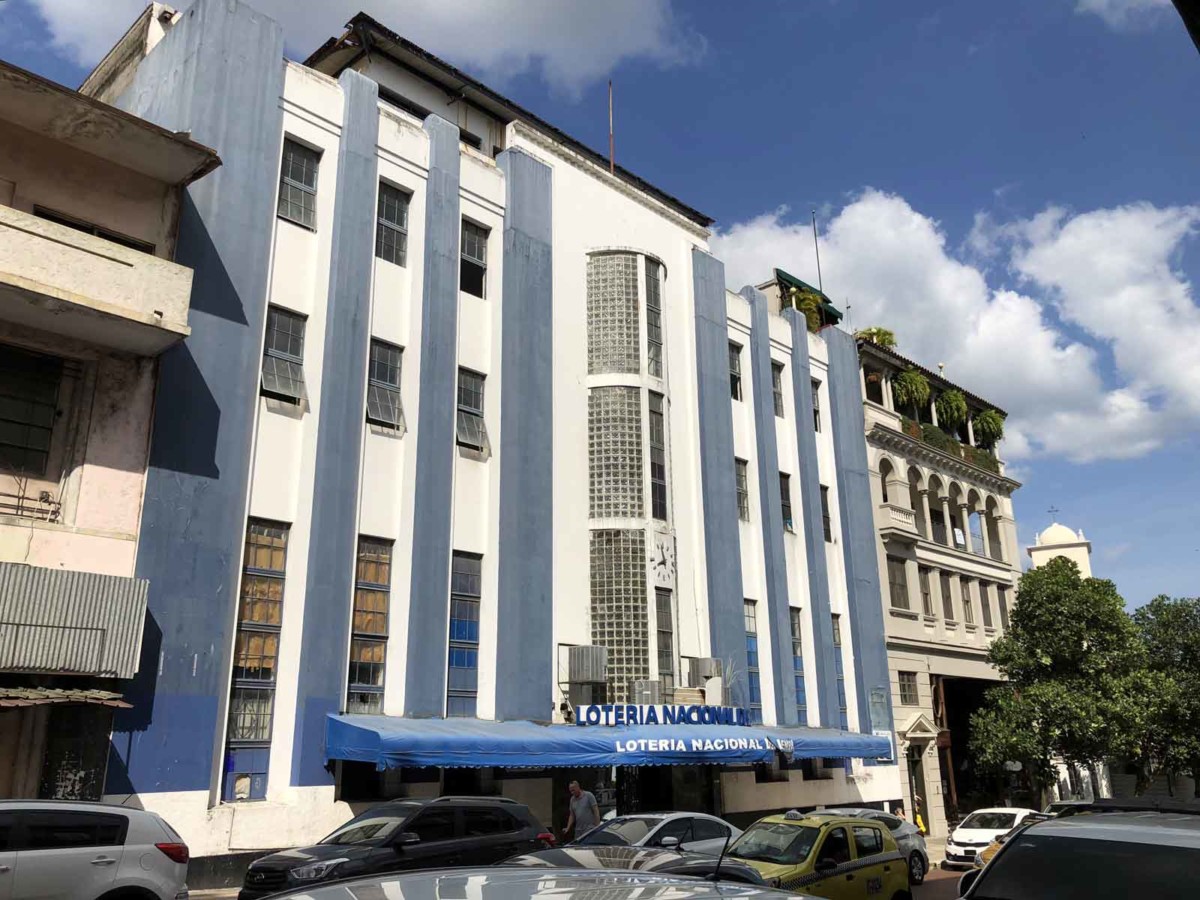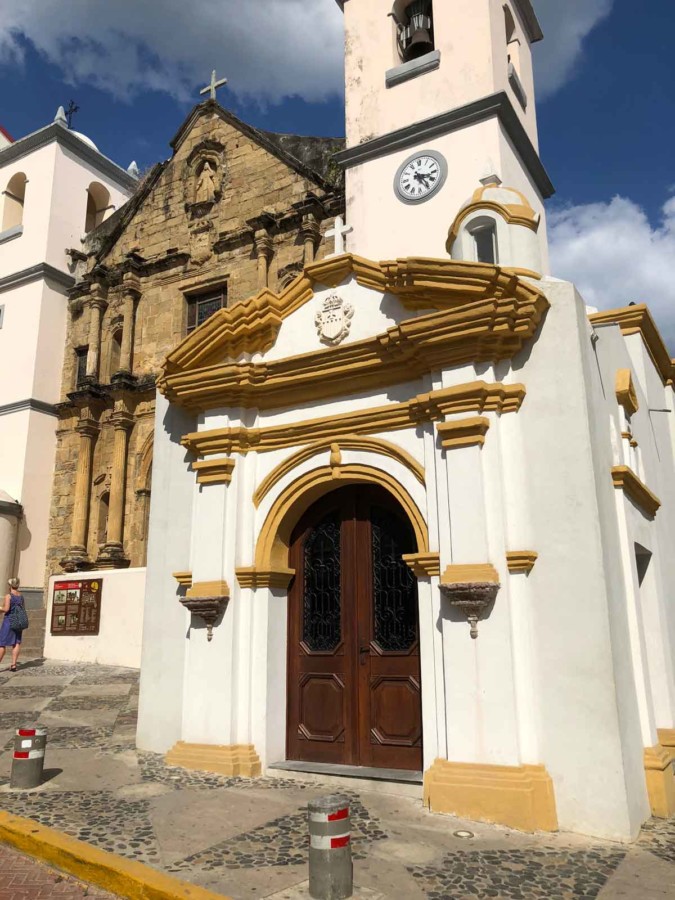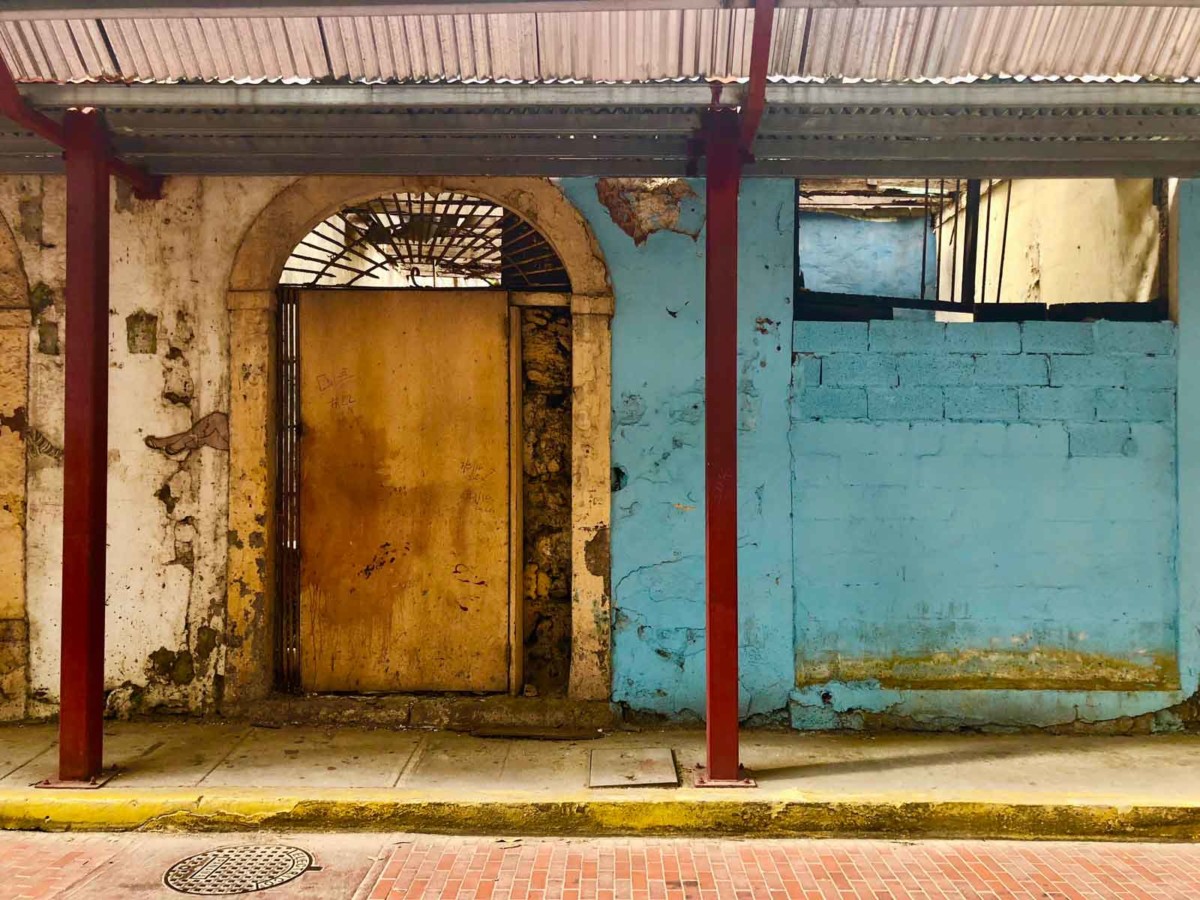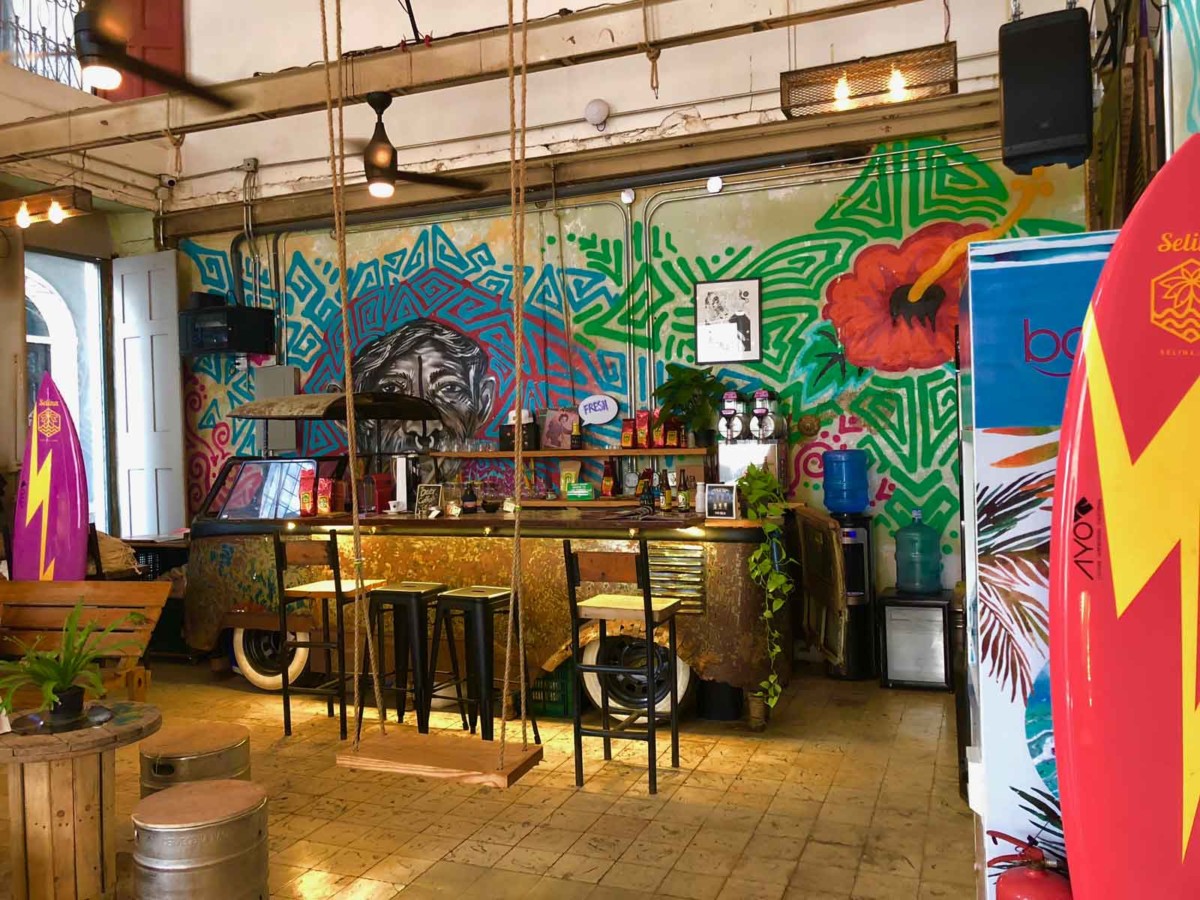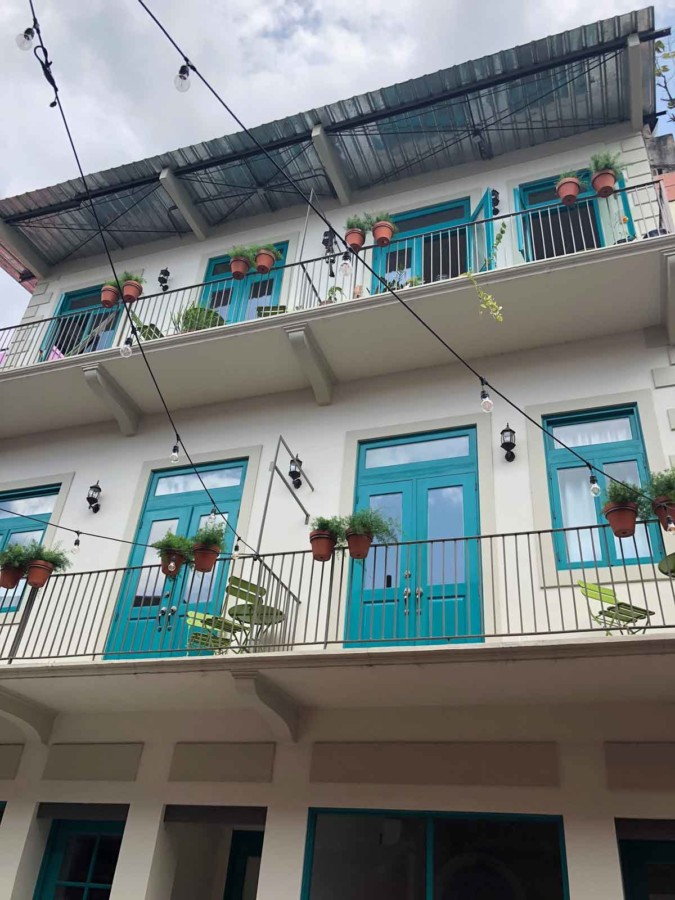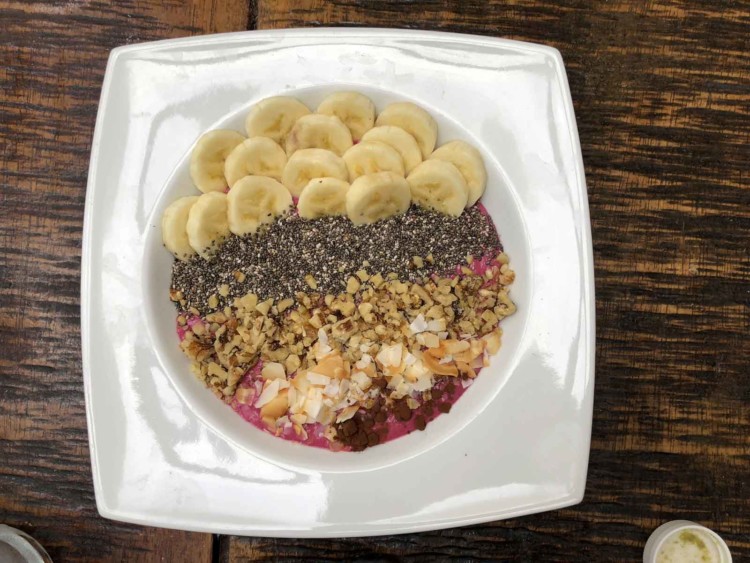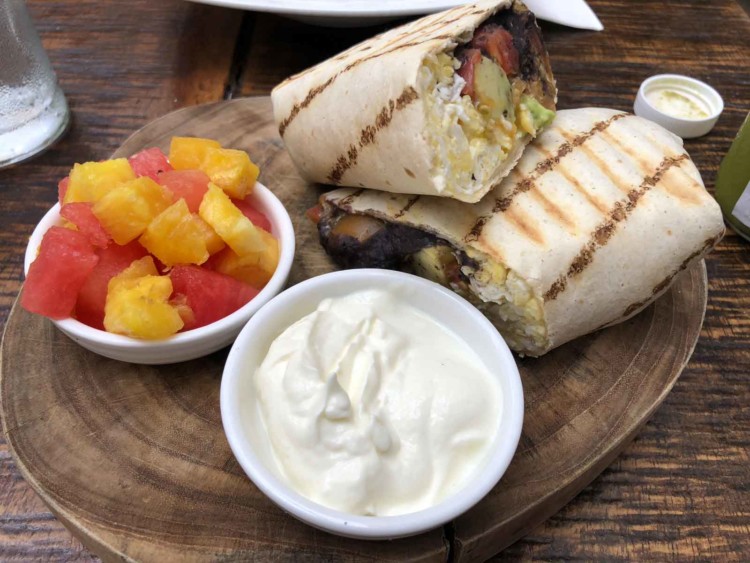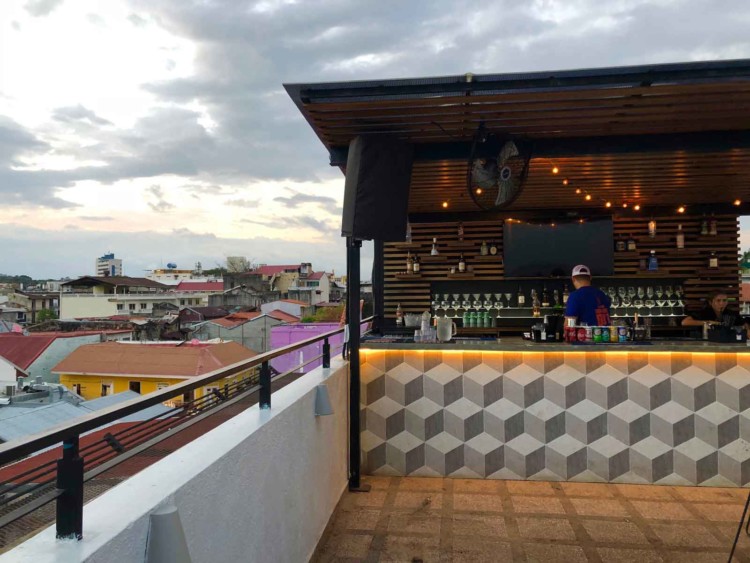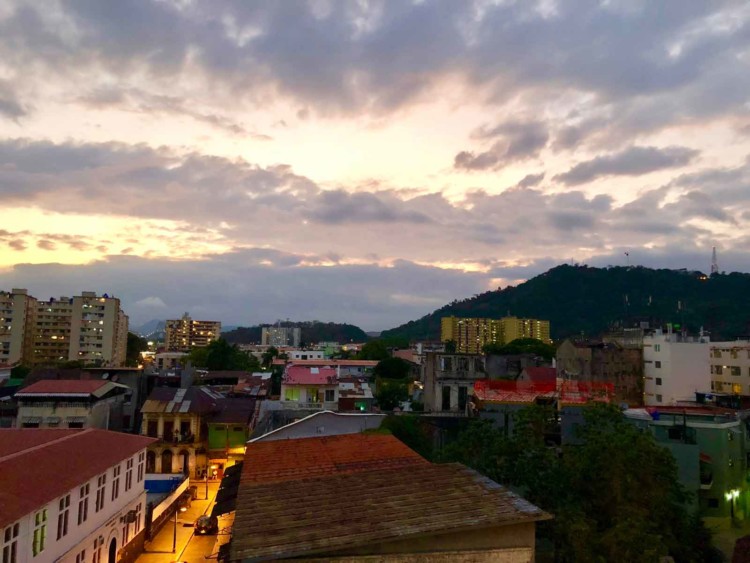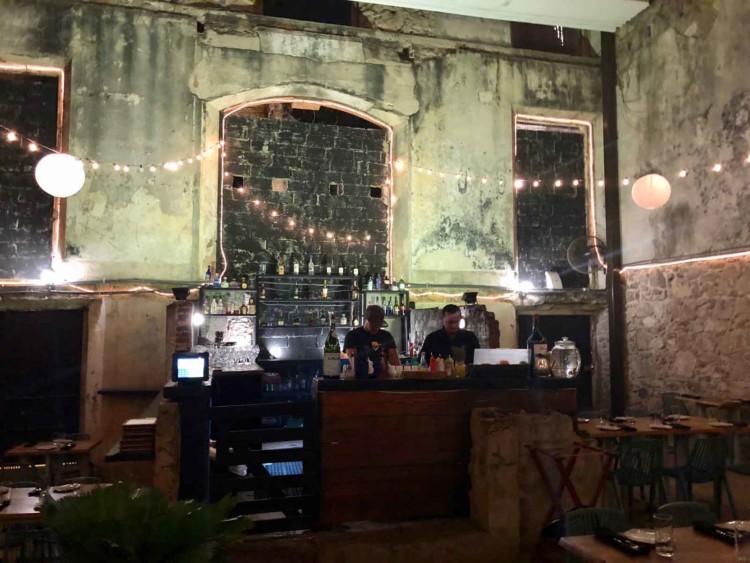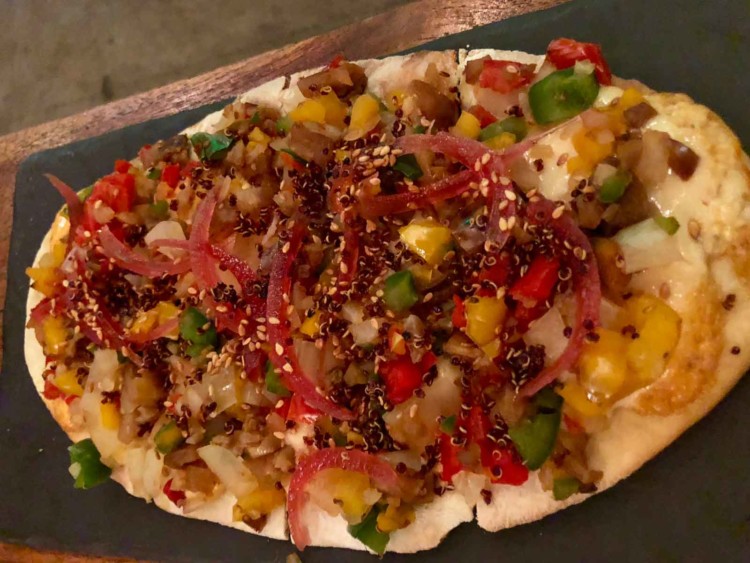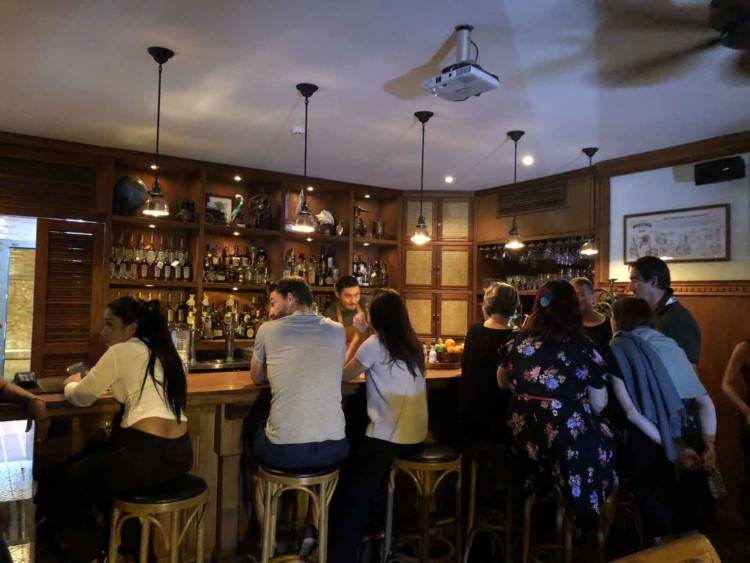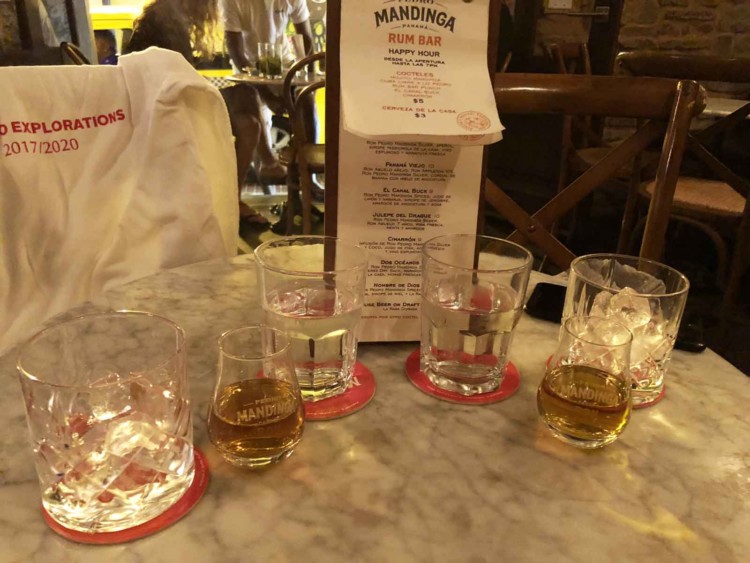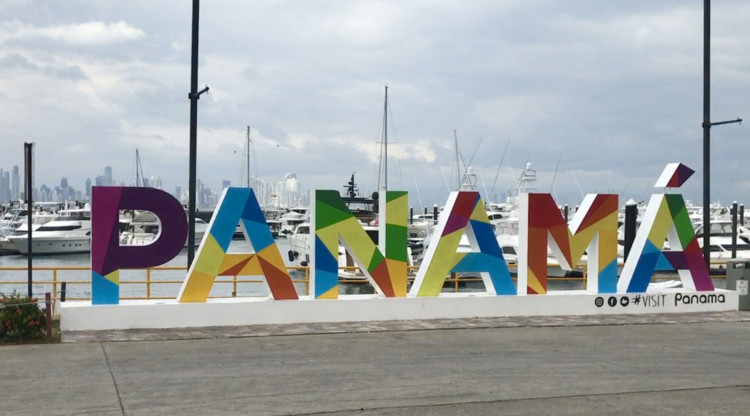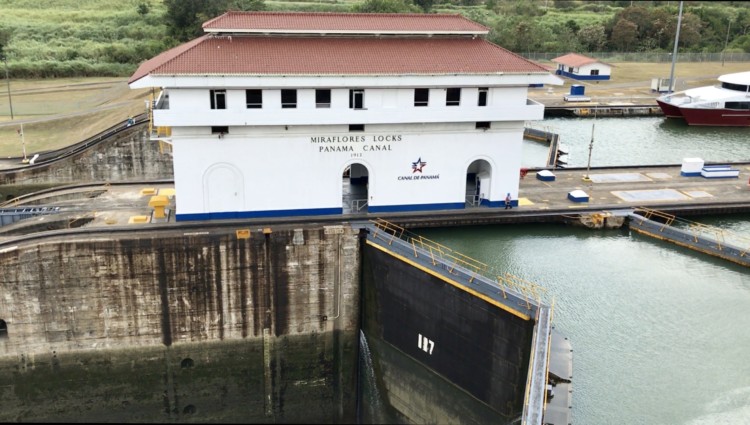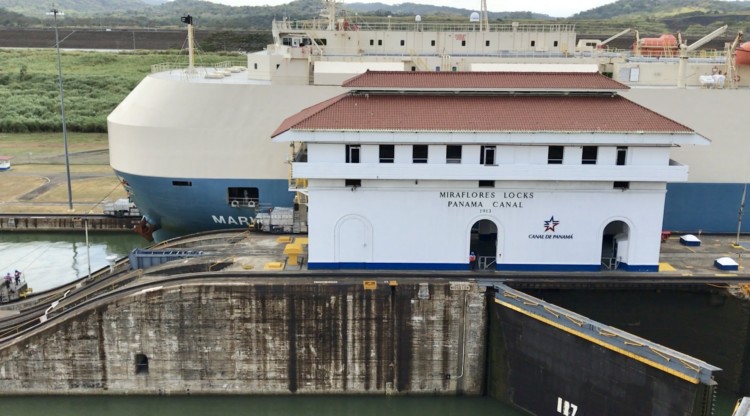Our mission in Malpelo has come to an end. As we sailed away tonight toward Panama we were lucky to have a beautiful send off from mother nature.

After spending the first couple of days exploring Casco Viejo, I ventured out into the city to see what else it had to offer, and to meet the scientific teams who were starting to arrive. For the 2nd part of the week, I stayed at Hotel Sortis in the downtown business district, which is a completely different (but also great) experience than staying in Casco Viejo. One of the most important attractions in Panama is the Panama Canal, which I would have liked to been able to be at while our vessel passed through, but the timing did not work. Some of my favorite parts of Panama City outside of Casco Viejo are listed here.
Miraflores Locks – Panama Canal Visitor Center
The visitor center has viewing decks at multiple levels so you can watch the whole process of ships passing through. They also have a movie, and time lapse video. I went straight to the viewing deck and watched as 3 ships passed through. The photos show the basic process; the ships are guided toward the gates by a small trolley car, the water is pumped from one side to the other until it is level, and the gate opens, and the ships pass. It is truly something to see.
This site is all the way across the city but is more than worth the visit. It is the site of the first European Settlement on the American Pacific coast. The city was established in 1519, and destroyed in 1671. Today the site is a beautiful monument and park area where you could easily spend hours.
Bonus – the Guayacan tree was in bloom! These trees are only in bloom for one or two days before the leaves fall and make a blanket of color on the ground below. I had very good luck to see this red flowering Guayacan in bloom.
Amador Causeway – this is a land bridge that connects 4 islands to the city, located close to the Pacific entrance of the Panama Canal. The best way to visit is by walking or biking as the views are spectacular and there are many places to stop along the way. I rented a bike just at the beginning of the causeway at Bicicletas Moses and rode all the way across, stopping for a juice at the end of the road and then biking back on the opposite side to take in the views there. You can also rent little 2 or 4 seat peddler carts if you have kids with you, or backpacks. Along the way you can see boats, city views, shops and restaurants, the marina, statues, and a cool spot where some containers and buildings have been covered in graffiti.
Biomuseo architecture by Frank Gehry
Outside the BioMuseo is their diversity park – but no bikes inside the park, so I suggest you go to the Museo before renting your bike. The building is closed on Mondays. The architecture itself is impressive, but the galleries and park are well worth taking the time to stop.
Downtown and the skyscrapers
The downtown areas are impressive with so much going on, lots of traffic, and huge skyscrapers. Unfortunately I did not have much time to explore but I have read there are some great rooftop restaurants to visit. One of my favorites while I stayed in the downtown area was Moma Restaurant and Lounge – the outside seating is spectacular with a huge painted graffiti wall, big screen and projector, and quiet ambiance in the heart of the city – and the food was wonderful!

I arrived in Panama City early to prepare for our mission to Malpelo Island without having been here before or knowing what I might discover. It has been a full week of sites to see, kind and helpful people, and great food.
Panama is a country of about 4 million people, half of which live here in the coastal capital of Panama City. It feels like two cities instead of one. The downtown business district has many skyscrapers and modern buildings. There is also the old town, known as Casco Viejo, which is full of historic buildings and churches, and there you have an equal mix of business and residential, with no sight of highrise buildings.
For the first few days of the trip I took the advice of many travel bloggers and stayed in Casco Viejo. This historic district of the city was built after the original Panama City was almost completely destroyed when pirates attacked it in the 1600’s. This area is very small with three main streets and only 10 to 15 cross streets. This makes it very easy to walk around and explore all of the shops, restaurants, and historic sites in just a few days. Some of my favorite places were;
Iglesia de la Compañia de Jesus, which is equally cool to visit during the day and after dark.

The rooftop deck views from the AirBNB apartment (and the pool was nice too).
Breakfast at Super Gourmet – the Panama Jungle Pie and Pie de Limón are a must!
Lunch at Tacos la Neta

Dinner at OCHO Y MEDIO
Seeing all the amazing and colorful textiles in the many shops, the Panama hats (which are actually made in Ecuador) and all of the Mola art
The contrast of old and new; there is definitely revitalization going on here.
Mähälo – any time of day. Great brunch, lunch, juice, local beer, cocktails
The rooftop view and dinner at Tomillo; go at 6pm for the rooftop cocktails and sunset, and then go downstairs to the ground floor courtyard and bar for dinner
And finally a nightcap and dancing (if you please) at Pedro Mandinga Rum Bar
Monaco Explorations next mission will be at Malpelo Island in the Eastern Pacific Ocean about 500km off the coast of Columbia. The Monaco Explorations team and scientific teams arrived in Panama City, Panama to prepare for the mission. Our vessel arrived in the Pacific Ocean via the Panama Canal on March 8th. It took a total of 9 hours in total to pass through the 80km canal. Construction on the Panama Canal began in 1881 and was completed in 1914. Nearly 14,000 ships pass through the canal annually.
Photos © Monaco Explorations (2018)
[vc_row][vc_column][vc_column_text] Aïa Mar is a Panamanian artist and ecological conservationist who was kind enough to spend part of her day talking with us about her work and what led her to become passionate on the topic of ecological conservation and taking us on a tour of the Panamá Viejo which are ruins remaining from the first permanent European settlement on the Pacific coast (settled in 1519). It was only fitting that the day was International Women’s Day, March 8th, and that Aïa’s most notable effort is that of rescuing and caring for two Geoffroy’s Tamarin female monkeys; a task Aïa says requires her attention “all day every day”.
Aïa Mar is a Panamanian artist and ecological conservationist who was kind enough to spend part of her day talking with us about her work and what led her to become passionate on the topic of ecological conservation and taking us on a tour of the Panamá Viejo which are ruins remaining from the first permanent European settlement on the Pacific coast (settled in 1519). It was only fitting that the day was International Women’s Day, March 8th, and that Aïa’s most notable effort is that of rescuing and caring for two Geoffroy’s Tamarin female monkeys; a task Aïa says requires her attention “all day every day”.
Aïa grew up here in Panama City but it was her family’s travels around Panama that brought her to a scuba diving course at the age of 16. Aïa tells us that at the time, scuba diving was not something people were doing much of in this area, and she remembers this first underwater experience as a life changing one. Indeed, true to those feelings, much of Aïa’s life and work has centered on water.
[/vc_column_text][gem_video video_src=”https://www.monacoexplorations.org/videos/EDM_AIAMAR_Panama.mp4″ image_src=”27560″][vc_column_text]Aïa left Panama for the USA in her late teens to pursue a college degree and while studying she made the decision to hone in on her interest for art. This decision led Aïa to travel around the world spending a month or so in different cities studying their art scene. Aïa spent time in Los Angeles, New York, Paris, Dubai, London, and many other cities but it was when she decided to go to Hawaii that she reconnected to her passion for diving – and it was also there that she (somewhat accidentally) discovered her skill for free diving.
Because she had spent so much time getting to know the ecology of those Hawaiian waters, Aïa chose to focus on water as a theme for her artwork back in Panama. She returned home to create art inspired by her experiences, but was also determined to continue free diving because she had seen the advantage of being able to experience time underwater without being attached to a dive tank, and the ways in which that freedom allowed her to be closer to species that she loved. Aïa went on to win the Free diving National Records for Panama (again somewhat accidentally) and has achieved 63 meters in depth and 2:41 seconds underwater.
Today, Aïa is a well-known artist who has shared her work at numerous gallery exhibits and installations. Her art is not centered solely on water, but the Earth’s elements and through this work she hopes to inspire others to consider the importance of conservation.

Roughly 10 years ago Aïa was working on a vessel off the coast of the Darién Provence in Panama and it was here that she learned of a small monkey named Mako who had been living in extremely poor conditions in captivity for all of her life. Aïa understood immediately that she would help Mako, although she did not imagine that doing so would lead her to adopt this monkey and care for her for the rest of her life. Mako’s species is endemic to Costa Rica, Colombia and Panama and unfortunately they are endangered due to population growth (deforestation) and being hunted for sale as pets. Aïa quickly learned that nursing Mako to health and turning her loose in the wild, or finding a rescue center to keep and care for her was not possible. She had to adjust to the idea that if she wanted Mako to survive, she would have to provide care for her at home. Doing so led Aïa to become a reference for people throughout the region who had come across these monkeys when they needed rescued or were being rescued but had fallen ill. It also led her to adopt Sky, another young female of the same species. Aïa’s life changed in a huge way after adopting the two monkeys, and much of her energy over the past 10 years has gone toward ensuring that Mako and Sky have a life that allows them to be safe, while still being as free as possible in the environment she is able to provide. Aïa never puts the monkeys in a cage of any kind and she spends hours each week taking them to safe places where they can “monkey around” in the wild, but return to their home with Aïa. While there are more rescue centers in the region now, and more options for help with this species as they are found in poor captivity conditions, Aïa has become known as a person who has dedicated herself to the conservation of the species and she often helps others find a rescue center or medical care.
Aïa explained to us that, looking back, she can see how the stars somewhat aligned for her to be the right person to not only take in, but advocate for the Geoffrey’s Tamarin species. Because she is an artist, she is able to spend much of her time at home with Mako and Sky, and has the time to give them the attention they need if they are to live away from their natural habitat. “I don’t leave home too often except to take Mako and Sky out into nature. At home I have Mako and Sky and my art work and I don’t really need much else”.
Meeting with Aïa, Mako and Sky was a great adventure and we were happy to learn about her work and passions. You can find out more about Aïa on her website and follow her beautiful artwork and adventures on Instagram @aia.mar.[/vc_column_text][/vc_column][/vc_row][vc_row][vc_column][/vc_column][/vc_row]
